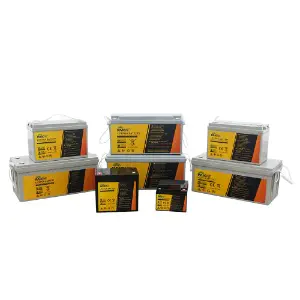Chemical Composition and Thermal Stability
One of the significant safety advantages of a Lithium Iron Phosphate Battery lies in its stable chemical composition. The cathode material, lithium iron phosphate (LiFePO₄), forms a robust olivine structure that resists breakdown and prevents oxygen release under thermal or electrical stress. In contrast, other lithium-ion batteries—especially those with nickel-cobalt-manganese (NCM) or nickel-cobalt-aluminum (NCA) cathodes—can release oxygen at elevated temperatures, increasing the risk of thermal runaway. This structural stability allows the battery to remain non-combustible and non-explosive even when punctured, overcharged, or exposed to heat, making it inherently safer.

Performance Under Abuse Conditions
Safety in real-world use often depends on how a battery behaves under conditions such as short-circuiting, mechanical impact, or overcharging. Tests have consistently shown that a Lithium Iron Phosphate Battery is more tolerant of these abuse scenarios than many competing chemistries. While NCM or NCA cells may vent or ignite under similar circumstances, LiFePO₄ cells typically do not experience dangerous temperature spikes or release toxic gases. This characteristic makes them suitable for applications where risk is critical, such as in school buses, residential energy systems, or medical backup power supplies.
Lower Risk of Thermal Runaway
Thermal runaway—a chain reaction that causes rapid temperature rise, fire, or explosion—is a primary concern with high-energy lithium-ion cells. A key advantage of using a Lithium Iron Phosphate Battery is its much higher thermal runaway threshold, often exceeding 250°C. Compared to other lithium chemistries that may enter this hazardous state at temperatures as low as 150°C to 200°C, LiFePO₄ cells offer a significantly wider margin of thermal safety. This high tolerance to heat not only protects the battery itself but also reduces the risk to nearby components and users.
Enhanced Structural Integrity and Longevity
Safety is also affected by a battery’s long-term performance and resistance to degradation. LiFePO₄ batteries have a longer cycle life and more gradual capacity fade than many other lithium-ion types, which helps prevent internal failure modes that could otherwise cause dangerous situations. Unlike cobalt-based chemistries that can develop unstable crystal structures over time, lithium iron phosphate remains structurally sound across thousands of charge-discharge cycles. This reliability reduces the risk of internal shorts or swelling, further reinforcing their status as one of the battery technologies.
Applications That Prioritize Safe Operation
Due to its good safety profile, this battery chemistry is increasingly favored in settings where human safety is a top priority. These include public transit, military systems, off-grid solar installations, and home backup power. While batteries with higher energy densities may still be used in applications where space is a premium, the trade-off in safety often steers system designers toward lithium iron phosphate for peace of mind and long-term dependability. The combination of chemical inertness and robust design makes it well-suited for high-demand environments with minimal tolerance for failure.
Conclusion: A Safer Alternative in the Lithium-Ion Landscape
In conclusion, the safety of a Lithium Iron Phosphate Battery surpasses that of many other lithium-ion chemistries due to its thermal stability, chemical integrity, and resistance to abusive conditions. While it may not always offer the high energy density, its predictability and resilience under stress make it the preferred choice where safety cannot be compromised. Whether used in homes, vehicles, or industrial systems, this battery type continues to set the benchmark for reliable and secure energy storage.
Get to know quickly
We are a professional lithium iron phosphate battery, solar energy storage system, industrial and commercial energy storage system manufacturer.
 +86-133 3592 3377
+86-133 3592 3377
 +86-4008833583
+86-4008833583
 Email: [email protected]
Email: [email protected]

Copyright © Zhejiang Paichen Energy Storage Group Co., Ltd All Rights Reserved.
Battery Energy System Manufacturer
